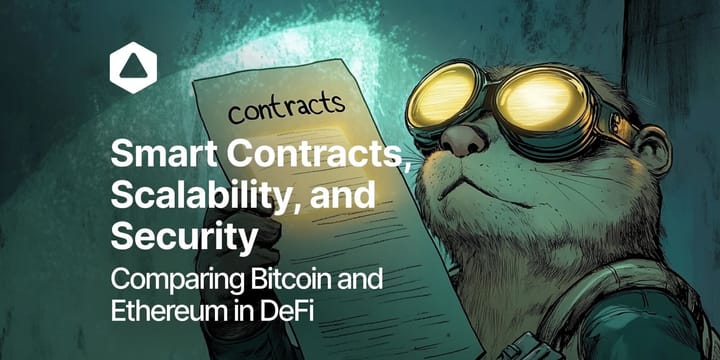How do Ethscriptions operate in comparison to Bitcoin Ordinals and what are they?

In addition to the article, Bitcoin Ordinals are taking over. "Ethscriptions" is a new system that has appeared in the Blockchain world. Bitcoin Ordinals and Ethscriptions were created with the same objective: to illustrate and advertise blockchain technology beyond only financial transactions. The two new protocols, Ethscriptions, and Bitcoin Ordinals let users create and share digital items on their respective blockchains.
What exactly is Ethscription?
As Ethereum introduces its cutting-edge technology called "Ethscription," the Web3 community is in a frenzy. Its objective is to completely transform the Web3 domain's digital assets market. On June 17, 2023, Tom Lehman, a co-founder of Genius, created Ethscriptions, a new protocol in the Ethereum ecosystem. Ethscriptions are created using Ethereum's "call data," a portion of the transaction data used to store arbitrary data. He tweets under the handle Middlemarch;

The data that is inscribed into an Ethscription is limited to 96KB, and it can be anything from a simple text message, images, or even code to a complex digital asset. Although Lehman stated that Ethscription will be used as only an image feature change will occur in the future.
To create an Ethscription, a user simply needs to send a transaction with the desired data in the calldata field. The transaction will be mined into the blockchain, and the data will be permanently inscribed. This explains that it is stored on the blockchain permanently. According to Lehman, this enables a more affordable and decentralized replacement for contract storage.
What is Bitcoin Ordinals?
In Bitcoin Ordinals are Taking Over, we explore what Bitcoin Ordinals are and why they matter to the cryptocurrency community. Different techniques are used to produce Bitcoin Ordinals. The Ordinals protocol leverages the timestamp found in each Bitcoin block to give each block a distinct number. To identify and follow the movement of satoshis (Bitcoin's smallest unit), these figures, known as "ordinals," can be found on the blockchain. A user only needs to send a transaction with the appropriate data and the ordinal number to generate a Bitcoin Ordinal. The data will be inextricably linked to the ordinal number after the transaction is mined into the blockchain. Similar to Ethscription, the Bitcoin Ordinals protocol enables users to add any kind of data to the Bitcoin blockchain. However, Bitcoin Ordinals are limited to data that can be represented as a number. This means that you can use Bitcoin Ordinals to create NFTs (non-fungible tokens), and images.
Comparison
There are three crucial distinctions to keep in mind when contrasting Ethscription and Bitcoin Ordinals:
First off, the file type used by Bitcoin Ordinals permits a variety of inscriptions, such as artwork, profile pictures, and playable games. Ethscriptions plans to grow to support more file types, which could result in broader applications even though it is currently only capable of image-only inscriptions. The second factor is how they are kept on the Blockchain. Ethscriptions are stored in the calldata field of a transaction, while Bitcoin Ordinals are stored in the block header. Given that they are not reliant on a single block, this indicates that Ethscriptions are more decentralized. Bitcoin Ordinals, on the other hand, are more secure because they are kept in the block header. The third factor is data size. The current data size cap for Ethscriptions is 96 kilobytes. The data handling capacity of Bitcoin Ordinals is 4 megabytes. This means that more complex data, like audio or video files, can be stored using Bitcoin Ordinals.
Future of Bitcoin Ordinals and Ethscriptions
It is still too early to say what the future holds for Ethscriptions and Bitcoin Ordinals because it is dependent on several variables, including the overall market for digital collectibles, the advancement of new technologies, the decisions taken by the respective communities, and governmental laws. However, both protocols have the potential to be used for a variety of purposes, such as creating digital assets, tracking the movement of funds, and proving ownership of data. It will be interesting to see how these protocols change over the ensuing years and whether they can keep innovating and satisfying customer demands.
Conclusion
The way we interact with blockchains could be completely changed by both Ethscriptions and Bitcoin Ordinals, two innovative new technologies that offer comparable capabilities. Smaller data sets should be stored using Ethscriptions, whereas bigger data sets should be stored using Bitcoin ordinals. More decentralized Ethscriptions exist. The optimal protocol will depend on your particular demands and circumstances, and it is still unknown which protocol will prove to be more effective in the end. Yet, it's important to keep an eye on Ethscriptions and Bitcoin Ordinals because they could have a significant impact on the development of blockchain technology.

Connect with Bitfinity Network
Bitfinity Wallet | Bitfinity Network | Twitter | Telegram | Discord | Github

*Disclaimer: While every effort is made on this website to provide accurate information, any opinions expressed or information disseminated do not necessarily reflect the views of Bitfinity itself.





Comments ()